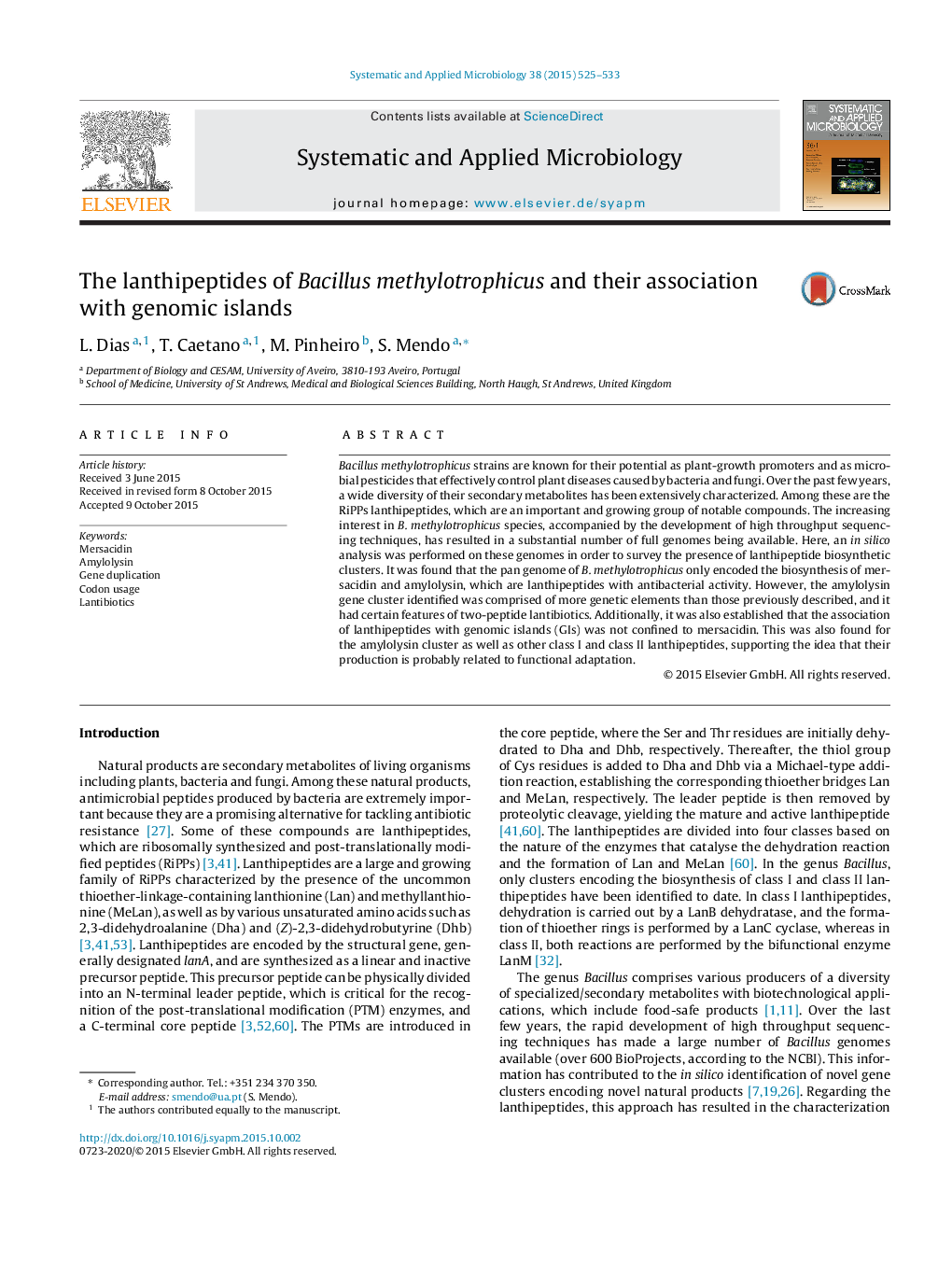| Article ID | Journal | Published Year | Pages | File Type |
|---|---|---|---|---|
| 2063623 | Systematic and Applied Microbiology | 2015 | 9 Pages |
Bacillus methylotrophicus strains are known for their potential as plant-growth promoters and as microbial pesticides that effectively control plant diseases caused by bacteria and fungi. Over the past few years, a wide diversity of their secondary metabolites has been extensively characterized. Among these are the RiPPs lanthipeptides, which are an important and growing group of notable compounds. The increasing interest in B. methylotrophicus species, accompanied by the development of high throughput sequencing techniques, has resulted in a substantial number of full genomes being available. Here, an in silico analysis was performed on these genomes in order to survey the presence of lanthipeptide biosynthetic clusters. It was found that the pan genome of B. methylotrophicus only encoded the biosynthesis of mersacidin and amylolysin, which are lanthipeptides with antibacterial activity. However, the amylolysin gene cluster identified was comprised of more genetic elements than those previously described, and it had certain features of two-peptide lantibiotics. Additionally, it was also established that the association of lanthipeptides with genomic islands (GIs) was not confined to mersacidin. This was also found for the amylolysin cluster as well as other class I and class II lanthipeptides, supporting the idea that their production is probably related to functional adaptation.
